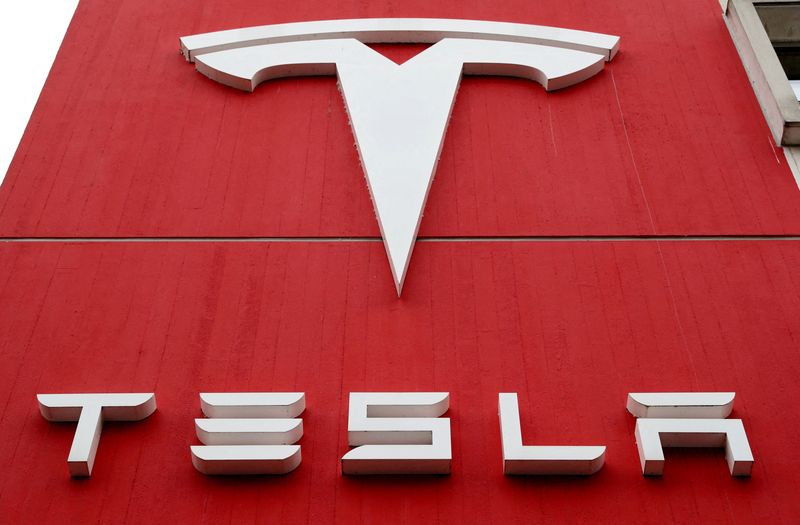Tesla’s margin falls as it boosts discounts to drive demand
2023.07.19 17:19

© Reuters. FILE PHOTO: The logo of car manufacturer Tesla is seen at a branch office in Bern, Switzerland October 28, 2020. REUTERS/Arnd Wiegmann/File Photo
By Akash Sriram and Hyunjoo Jin
(Reuters) -Tesla’s gross profit margin dropped to a four-year low in the second quarter after Chief Executive Elon Musk doubled down on a price war with rival automakers, but sales and profit still beat Street expectations.
Under pressure from increasing competition and an uncertain economy, Tesla (NASDAQ:) has cut prices and increased discounts and other incentives to reduce inventory, pressuring its automotive gross margin, a closely watched indicator of the company’s financial health.
Tesla said in a statement on Wednesday it was focusing on reducing costs and on new product development, and that the “challenges of these uncertain times are not over.”
Automotive gross margin, excluding regulatory credits, fell to 18.1% in the second quarter from 19% in the first quarter, according to Reuters’ calculation. A year earlier it was 26%.
The company said lower raw-material costs and government tax credits helped lower cost per vehicle.
“Auto GM (ex credits) … beat the key Street line in the sand 17.5% bogey and a main focus on investors on this print,” Wedbush Securities analyst Dan Ives said. “All focus now on conference call and margins/’price cuts done’ debatable point. Overall solid results and in line with our thesis.”
Tesla reported overall gross margin of 18.2% for the April-June period – the lowest in 16 quarters – compared with 19.3% for the first quarter.
Shares of the Austin, Texas-based automaker rose 2% after the bell.
Tesla on Wednesday reiterated that it expects to achieve deliveries of around 1.8 million vehicles this year. The automaker had predicted in October it would sell every car it manufactured in the foreseeable future but in the second quarter it produced 13,560 more vehicles than it delivered. That number, though, was narrower than first-quarter figures.
Recently, a lack of new models has made it tougher for Tesla to take on rivals in China, where glitzier offerings from local players have weighed on demand.
Lower pricing, along with government tax breaks for EV buyers in the United States and elsewhere, drove Tesla’s deliveries to a record 466,000 vehicles in the April-July period globally, but ate in to the profitability of the company whose margins have long been the envy of the auto industry.
On an adjusted basis, Tesla earned 91 cents per share. Analysts had expected a profit of 82 cents per share, according to Refinitiv IBES data. It was not immediately clear if the numbers were comparable.
The company reported revenue in the April-June period of $24.93 billion, compared with estimates of $24.48 billion, according to Refinitiv data.
Musk in April signaled that the company would prioritize sales growth ahead of profit in a weak economy and amid rising competition. Tesla this year cut prices of its Model Y long-range version by a quarter to $50,490.
Tesla’s share price has more than doubled this year, helped by rival automakers backing Tesla’s charging standard, as well as expanded federal credits for Model 3s and investor excitement over artificial intelligence.








